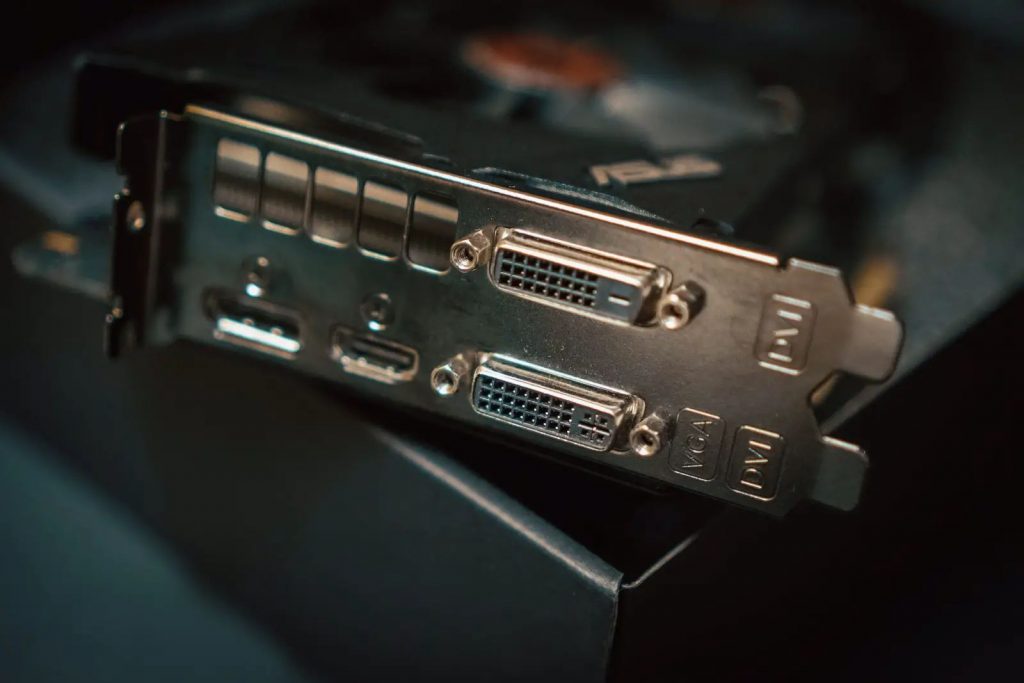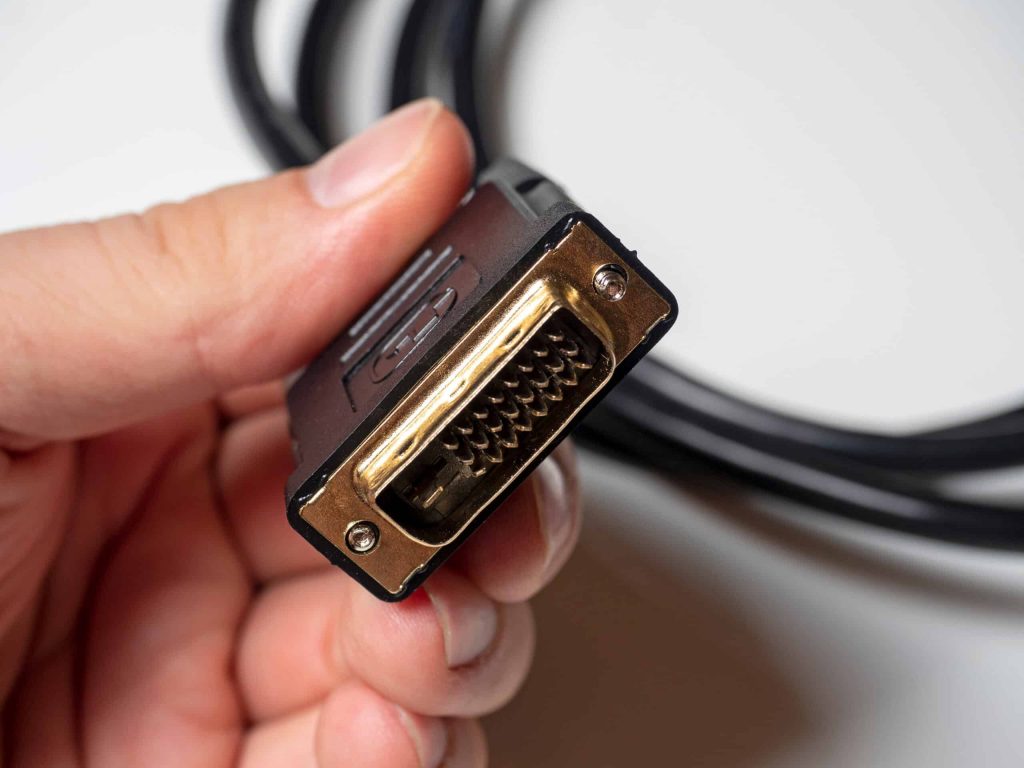You will need a DVI connector if you want to set up DVI on your projector. However, if you have never come across the term before, you may wonder what is a DVI connector or even what DVI stands for. So, you can discover everything below; let’s get started!

What Is a DVI Connector?
The abbreviation DVI stands for Digital Video Interface. The DVI video display interface was developed to be the industry standard for transmitting digital video images to devices at resolutions as high as 2560 x 1600. Computer monitors and projectors are the most common devices using DVI connections.
Moreover, high-resolution digital images and videos from a PC to a monitor, projector, or TV screen. The usual cable required to connect your computer to a display is a DVI connector. You can quickly connect with this cable, and it’s incredibly simple to use and set up.
DVI Connector Overview
The Digital Display Working Group created the DVI (Digital Visual Interface) digital video interface. It can accommodate both digital and analog video signals via a single DVI connection and is frequently found on computers, LCD monitors, projectors, and other digital display devices.
The DDWG created DVI to be the industry standard for digital video transmission. Your home theater equipment can get a clear picture with a DVI link. Depending on the type of DVI connection the DVI connection at the cable’s other end is designed for, it may have many pins.
The DVI connector is how the digital video signals are transmitted to your projector or computer monitor. The DVI connector includes Pons for the display data channel. The DVI cables range in lengths from 15 ft up to 49 ft.
There are three different kinds of DVI cables and connections, and each one has a unique pin configuration:
- DVI-D or Digital Video Interface-Digital. Supports only digital signals
- DVI-A or Digital Video Interface-Analog. Supports only analog signals
- Both analog and digital signals can be sent via DVI-I or Digital Video Interface-Integrated
As long as your equipment supports it, it would be best if you normally used DVI before component video, s-video, and composite video.
Types of DVI Connectors
There are three main formats for DVI. DVI-I has pins for both digital and analog signals. Only enough pins are present on DVI-D to support a digital signal.
Moreover, DVI-A only transmits analog signals. Due to its capacity to support all other formats, DVI-I is the most frequently encountered female connector, while DVI-D is the most frequently encountered male connector.
DVI-I (Integrated DVI Connector)
The DVI ports used by several equipment makers have all of the pin holes open. This does not imply that the port accepts DVI-I signals for both analog and digital signals. It safeguards against pins coming loose if the incorrect cable is introduced. Check the label, manual, or manufacturer to confirm the DVI format of the port.
Read more: What Is AV Output?

DVI-D (Digital Only DVI Connector)
Direct digital connections between LCD monitors and video source devices, such as video cards, are made via DVI-D cables. Due to the nature of the digital format, this offers a quicker, higher-quality image than analog.
At the VGA output, all video cards transform their initial digital video signal to an analog one. The analog signal is transformed back to a digital signal when it reaches the monitor. DVI-D enhances the link between the source and display by removing the analog conversion step.
DVI-A (Analog Only DVI Connector)
This cable is what you need if you are attaching a DVI computer to a VGA monitor. DVI-A cables transmit a DVI signal to an analog display.
Since DVI-A and VGA both convey the same signal, connecting to a VGA device is the most typical application for DVI-A. A digital signal is advised whenever possible because converting digital to analog involves some quality loss.
Single and Dual Link DVI
Every DVI connector type, except for DVI-A, contains pins that pass digital video signals. They are available in two varieties, single link, and dual-link.
- Single link DVI uses a single 165 MHz transmitter that supports resolutions up to 1920 x 1200 at 60 Hz.
- Dual-link DVI has six added pins in the center of the connector. These are for a second transmitter, which increases the bandwidth and supporting resolutions up to 2560 x 1600 at 60 Hz. Connectors with these additional pins are also referred to as DVI-DL.
Which Type of DVI Connector Is the Best?
DVI-I cables are integrated cables that carry either an analog-to-analog signal or a digital-to-digital signal. As a result, it becomes a more adaptable cable that may be used in both digital and analog settings.
DVI digital and analog formats cannot be switched like any other format. This means that you will not be able to use the DVI-D connector instead of DVI-A because it requires an analog. The same is true the other way around, too. If you need DVI-A, you cannot replace it with a DVI-D connector.
Similarities Between DVI and HDMI
Of the connectors, HDMI and DVI-D are comparable but not identical. The key distinctions between the two are that HDMI, unlike DVI, offers stereo and multichannel audio, the YUV color scheme, and CEC (consumer electronic control) control signals.
Copyright-protected media may also be difficult to play with DVI since the connections might not support HDCP (high-bandwidth digital content protection).
Do You Need Additional Software for DVI?
If your projector supports DVI, you do not need to install any additional software. Furthermore, if your projector supports both DVI and VGA, it is better to use a DVI connector as the image quality is likely better.
Also read: What Is a Component Video Input?
Conclusion
When setting up your projector, you will see a certain level of technical knowledge needed. However, it is not overly complicated, and most terms can be easily understood with a simple Internet search.
Nonetheless, the number of cables you need to connect may confuse you. So, for example, if you are asking yourself what is a DVI connector, you can refer to the text above where I have answered exactly that.